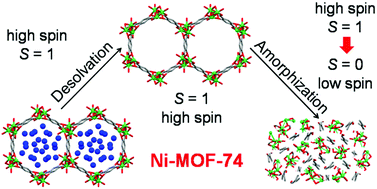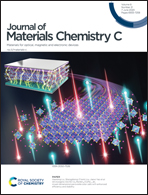Impact of dehydration and mechanical amorphization on the magnetic properties of Ni(ii)-MOF-74†
Abstract
Mechanically responsive metal–organic frameworks (MOFs) came very recently into the spotlight of material science for their unique properties and potential new fields of application. We present here a clarification of the magnetic properties of prototypical magnetic MOF-74 material, Ni(II)-MOF-74, using magnetization measurements, X-band electron spin resonance (ESR), multi-frequency high-field ESR (HF-ESR), and theoretical model. It was established that the guests populating the honeycomb channels have little influence on the magnetism of Ni-MOF-74, whereas magnetic properties change significantly upon mechanical amorphization. Amorphous material (am-Ni-MOF-74), which can be readily prepared by the mechanochemical treatment of dehydrated Ni-MOF-74 (deh-Ni-MOF-74), as shown by in situ monitoring methods, displays significantly lower bulk magnetization compared to Ni-MOF-74 and deh-Ni-MOF-74. This decline in magnetization is established to be a consequence of the spin-crossover from high-spin to a low-spin state of nickel(II) ions. The observed spin-crossover was rationalized by an insight into the changes of the nickel coordination sphere during the amorphization, which was provided by solid-state nuclear magnetic resonance (NMR) and infrared (IR) spectroscopy. Additionally, it was found that am-Ni-MOF-74 behaves differently than its zinc analogue when exposed to vapors or liquid-additives in the milling process, indicating that the nature of the metal node plays a substantial role in the mechanical properties of this modular family of MOF materials.



 Please wait while we load your content...
Please wait while we load your content...